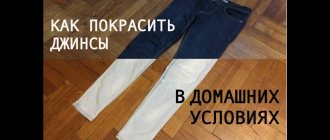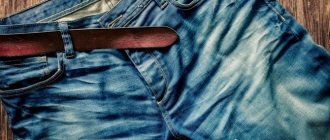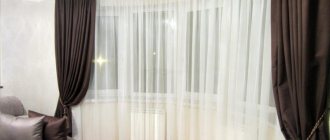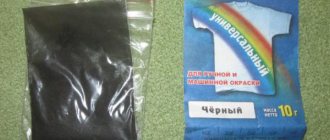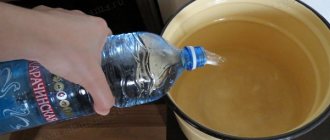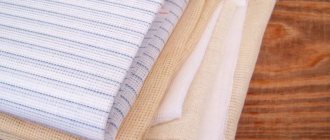Household blue is considered a mixture of dye and starch, sold in powder or liquid form. The substance is usually used as a bed linen freshener. Linen bluing allows you to make linen and cotton shirts white. It is also used for tinting materials. More details about this tool are described in the article.
Blue for linen is divided into 2 types: with soluble and insoluble dye. The second option is considered cheap; it is used only when refreshing products. Soluble - for dyeing clothes.
How to remove bluing from white clothes?
You will need 1 teaspoon of citric acid. It must be dissolved in one glass of water. The resulting mixture is heated. The hot solution is applied to the stain and gently rubbed in using a cotton pad.
Interesting materials:
How to make a cur code? How to make classic Slime? How to make the keyboard on iPad smaller? How to make keyboard on the screen? How to make papier mache glue from PVA? How to make tile adhesive with your own hands? How to make glue from scrap materials? How to make glue paste? How to make PVA glue at home? How to make paste for crafts?
Compound
What is the composition of blue for linen? It is a sodium aluminosilicate containing sulfur and sodium sulfate. In the USSR, grade 1 and grade 2 products were sold, which differed in intensity and shade. The blue should dissolve easily in water. Because of its lightness, it does not stay at the bottom for long. The composition of the Soviet product excluded the presence of organic dyes, Prussian blue and soot.
Important
- Blue is needed for those who prefer simplified processing methods to a variety of toxic bleaching powders.
- A high-quality product does not stain containers or the skin of your hands.
- Blue is not a permanent dye. Each subsequent wash will wash out the color pigments, so re-blueing should be done from time to time.
- To obtain a good result, each item must be processed separately.
- Table salt added along with the blue when rinsing will help keep the blue color longer.
- To achieve the desired result, it is better to first practice on old things.
- Always read the instructions for use of the dye, because depending on the manufacturer, release form and composition, dyeing may have different results.
- Blue blue, which contains starch, should be boiled after dilution and then strained.
- Do not try to replace the bluing with a blue item of clothing when washing white clothes in the machine, as this may lead to unpredictable results.
- The chemical should be stored in a tightly closed container out of the reach of children.
Blue is a fairly cheap substance that can replace many expensive powders with a whitening effect. It is also an indispensable product for adding freshness to linen and richness to blue and blue clothes. Also, such a simple, popular substance as blueing can serve as a source of inspiration for creating unusual shades or patterns when dyeing.
Blue for linen - instructions for use
Pin Send by email SMS mail
Household blue is considered a mixture of dye and starch, sold in powder or liquid form. The substance is usually used as a bed linen freshener. Linen bluing allows you to make linen and cotton shirts white. It is also used for tinting materials. More details about this tool are described in the article.
Blue for linen is divided into 2 types: with soluble and insoluble dye. The second option is considered cheap; it is used only when refreshing products. Soluble - for dyeing clothes.
What is methylene blue
An aqueous solution of methylene blue is a synthetic antiseptic that has been used externally in dentistry for a long time to treat stomatitis, gingivitis, caries, and periodontitis.
It is also used to treat abscesses, burn wounds, trophic ulcers, bacterial, viral, fungal mold diseases. For nursing mothers, medical blue is recommended for the purpose of disinfecting pathogenic bacteria and fungi in cracked nipples, which protects babies from getting thrush.
Oral administration - for diagnosis and treatment of diseases of the genitourinary system. Occasionally used in the treatment of neuralgia. Effectively used for poisoning. In veterinary medicine, the drug serves as a medicine for healing the mucous membranes of the mouth, ears and skin of animals. Elimination of fungal infections of aquarium fish.
A 1% aqueous solution has a pronounced blue color and permanently stains the surfaces of skin, fabrics, and others. When using, it is important to check individual tolerance. Do not allow the substance to get into your eyes. Available in ampoules, bottles, alcoholic, aqueous preparations and in the form of powders.
Beneficial features
The pharmacological effect of the alkaline drug is detrimental to many pathogenic microorganisms. The scope of application of the antiseptic is quite wide, thanks to its disinfecting and restorative properties:
The use of methylene blue as an antiseptic is due to the mechanism of its action: when it comes into contact with damaged infected cells of the body, the blue from stomatitis forms a poorly soluble strong compound with a foreign protein of the pathogenic microorganism, as a result of which the virus (bacterium, fungus) instantly dies.
on this topic
Where to buy blue for stomatitis? Everything is simple here: the drug is sold in almost every pharmacy. We also recommend that you get acquainted with equally effective ways to combat stomatitis at home:
Based on many years of observations, it was noticed that blueing in the treatment of stomatitis gives very good results. Due to its wide range of actions, the product is recommended in all children's hospitals.
Dyeing jeans fabric, not only trousers, but also other things made from denim, can give these things a new embodiment and a second life. To carry out this procedure, not only the usual bluing will do, but you can also dye blue and dark blue jeans, as well as gray or white jeans.
Application for stomatitis
The drug is non-toxic because it is not able to penetrate blood vessels, so it is prescribed even to infants. Treatment of blue stomatitis in children is carried out by a pediatrician; on his recommendation, further examination by another specialist is prescribed.
Blue for stomatitis was popular 10-20 years ago. Therefore, now when a child is diagnosed with stomatitis, mothers and, especially, grandmothers often remember the bluing. Does blueing help with stomatitis? Let's figure it out together.
Methods of application
- The alcohol solution is used only externally for pyoderma, chickenpox, herpes, and for treating wounds. It is not recommended to apply it to mucous membranes.
- A 1% aqueous solution of methylene blue can be used externally (applied to the skin) and topically (applied to the mucous membranes).
- 1% aqueous solution in 25% glucose solution for intravenous administration - administered intravenously slowly for poisoning with hydrogen sulfide, carbon monoxide, cyanides, aniline, nitrites, as an antidote.
- A 0.02% aqueous solution can be used to wash the urethra and bladder.
- Methylene blue powder is taken orally for cystitis and urethritis.
As can be seen from the above, an aqueous solution of blue can not only be applied to the mucous membranes, but even taken orally and administered intravenously, therefore blue is quite safe.
Blue has antiseptic properties, which means it kills harmful microbes in the oral cavity.
Therefore, blue can be used for stomatitis.
How to use?
- For stomatitis, only a 1% aqueous solution of methylene blue can be used.
An alcohol solution of bluing is not used for stomatitis, because it causes discomfort in the mouth, increases pain, and can lead to burns of the oral mucosa. - For stomatitis, a 1% aqueous solution of methylene blue should be applied to affected areas (ulcers, blisters, etc.) on the oral mucosa 5-6 times a day after meals.
- A 1% aqueous solution of methylene blue for stomatitis is approved for use in children from birth.
Targeted use in dentistry
Methylene blue in dentistry acts as an effective anti-inflammatory agent and antiseptic.
Stomatitis on the lip
Source: https://DentalVbg.ru/raznoe/sinka-na-mashinu-2.html
Choice
Painting with this product should only be carried out on suitable materials. It must be taken into account that:
- Blue for laundry must be water soluble. Then you will get a uniform color - insoluble ones make streaks when used in a concentrated manner.
- Powder and liquid should be diluted with water until dissolved before use.
- The substance is used for washing and rinsing. If you need coloring, it is advisable to choose a special product.
- The product is used to dye white materials and refresh blue fabrics. Dark colors do not change, but other light colors may produce unexpected results. The substance is typically used in updating jeans.
- Linen bluing can dye natural fabrics.
Do I need to rub, twist, iron?
Before making the tulle snow-white, you need to prepare for this process according to all the rules:
- shake out the cloth to remove dust;
- stop using chlorine-containing products;
- temperature for washing tulle - no higher than 40°C (hot water will ruin the fabric, and cold water will not cope with dirt);
- the best detergent for washing is liquid;
- if you use powder, it must first be dissolved;
- the fabric does not need to be rubbed;
- so that the curtains are without folds, they are not twisted;
- do not dry the tulle in the sun - you will get a yellow color;
- To iron the tulle after washing, you don’t need to take an iron: you just need to hang wet curtains on the curtain rod.
How to bleach tulle: 6 options
As long as the curtains are new and fresh, they look quite attractive. But time and repeated washing cause the tulle to turn yellow or gray. And kitchen curtains generally become covered with greasy stains. It is in such cases that you need to not just wash the item, but bleach the tulle curtains. There are several proven methods for this.
Yellowness is easily washed off in a saline solution. The stronger the solution, the more likely it is that the curtains will take on a snow-white appearance.
- Take 100 g of salt and mix with powder 1:1.
- Dissolve the mixture in a liter of warm water. Need more water? Then increase the amount of salt and powder proportionally.
- Immerse the tulle in the liquid.
- Leave for a while (the longer the better, but at least three hours).
- Rinse, wash.
Blue
Despite the fact that bluing is becoming increasingly difficult to find today, it is one of the most effective methods for bleaching tulle. Wash the curtains first, and then do the blue rinse.
- Take 0.5 teaspoon of blue for 10 liters of water.
- Stir the product well so that there are no lumps, otherwise they will leave unsightly marks on the fabric.
- Dip the tulle into the solution several times.
- Rinse.
- Don't squeeze, let it drain.
Zelenka
This product will help put the tulle in order, but you need to act very carefully here, since undissolved brilliant green will simply ruin the thing.
- Add ten drops of brilliant green to a glass of water and stir.
- Wait until completely dissolved.
- If precipitation occurs, it is necessary to filter.
- Pour the solution into a ten-liter basin filled with water.
- Send the washed tulle next and leave for five minutes.
- Rinse.
- Don't squeeze, let it drain.
Peroxide
A good remedy if you have cotton curtains; this method will not work for other fabrics.
- Prepare a bucket of hot water
- Pour in one tablespoon of ammonia and three tablespoons of hydrogen peroxide, stir.
- Place the washed tulle in the resulting solution for 30 minutes.
- Rinse.
- Don't squeeze, let it drain.
Potassium permangantsovka
Potassium permanganate also received good reviews as a curtain bleach.
- Rub a bar of laundry soap.
- Dissolve a few grains of potassium permanganate in a glass of water.
- Mix soap and potassium permanganate with water prepared in a basin for soaking the fabric.
- Place the tulle in the resulting composition for 30 minutes.
- Rinse.
- Wash it.
- Don't squeeze, let it drain.
Digestion
Boiling will help remove kitchen tulle from greasy stains and heavy dirt. The method is old, but effective. However, it is only suitable for curtains woven from thick threads.
- Pour water into an iron basin and add your favorite laundry detergent.
- Place on the fire and place the tulle there.
- Wait until the water boils, and then, stirring, boil the curtains for 40-60 minutes.
- Rinse.
- Don't squeeze, let it drain.
Using the washing machine
If allowed, bluing for washing clothes can be used in the washing machine. You can also do coloring. The work is performed in the following sequence:
- You should check whether there are any dense lumps in the liquid dye, and the powdered dye should be diluted with water. Grains of sand can ruin clothes and leave bright stains on them.
- The product is added to the drum of the machine. If the instructions say to add soda or salt, then do so. This is required to fix the color.
- You need to choose an intensive wash if the fabric is thick. And the temperature is 90-95 degrees. The cycle is long.
- Do not use washing powders, rinse aids and other products.
- After washing, jeans should be placed in a basin to soak in vinegar, which will fix the color.
- To prevent other clothes from getting dirty, the car is turned on at idle speed and then wiped from the inside. It is advisable to add a small amount of bleach to the powder compartment.
When using blue, you need to consider that:
- A quality product will not stain your hands or bathtub. If traces of it remain, there is a possibility of damage to the item.
- Blue is not considered a permanent dye - it fades with each wash, so repeated procedures are required. For lasting results, you need to use special paints for materials.
Each item needs to be processed separately if you want to get an excellent result. It is necessary to adhere to the rules of the procedure, observing the time period for painting.
The dyes have good resistance to external factors, so you can safely wash them. But you should not prolong the procedure or change the temperature. It is advisable to wash the item by hand with water at 40 degrees. Thus, blue can be used to color things. It is usually used for jeans. Even an old thing takes on a new look.
Washing methods
The curtains can be washed either in a machine or by hand. Remember that jewelry in the form of muslin, ribbons, and fringe do not like automatic washing and can be hopelessly damaged. But dense fabrics, curtains made of polyester and viscose feel good in the drum. Hand washing is more gentle, but old tulle curtains cannot be tidied up this way.
Manual
It would seem that this is the most basic way: pour water, throw in a handful of powder and, with physical effort, wash the item. But not everything is so simple, since you need to wash tulle wisely. To achieve the result, the following actions are required.
- Soak. Make a saline solution, add any detergent and soak the tulle in the liquid. If it is not too dirty, then two to three hours will be enough, otherwise you can leave it overnight. Before washing, you need to rinse the curtains in several waters.
- Wash. Wash in warm water using a suitable detergent. If you take powder, first dissolve it in water. But to brighten the color, you can pour in a little vinegar. Lather the water well, then add the tulle there. Foam is the product that perfectly washes delicate fabrics. Remember the curtains in the water. No need to squeeze or rub too hard - this is unnecessary.
- Rinse . Pour clean water. Add some blue. Dip the curtains and rinse them gently. Thanks to the blue, you can wash the tulle from grayness - the curtains will acquire a barely noticeable shimmer and freshness, as if you had just bought them.
Machine
Activator-type machines are not suitable for such things, so it is best to wash tulle in an automatic washing machine. To prevent the curtains from being damaged, you need to use a special bag, which is what it’s called: for washing delicate items. If you don't have one, fold the tulle into a clean white pillowcase. What's next? Follow the following five-step procedure.
- Place the tulle in the drum of the machine.
- Pour gentle detergent and tulle bleach into the special compartments (it does not contain chlorine).
- Select the “delicate”, “gentle”, “neat” mode (each machine has something similar). The cycle should be the smallest that the programs offer.
- Turn on the “extra rinse” option.
- Turn off spin or select the lowest speed available.
If you do everything correctly, then at the end of the wash you will get clean and fresh curtains without making any special efforts - the machine will do everything for you.
Procedure
How is blue linen used? The instructions will allow you to perform the procedure correctly:
- Dilute the substance according to the instructions. There should be no clots of coloring agent left in the water; it should be uniform in color.
- The bath needs to be filled with water.
- Then you should lay out your clothes in the bathroom. Uniformity is necessary so that when dyeing you get one color. The water should cover the item. For a slight bluing, a few minutes are enough, and for coloring from 1 hour. For jeans you need 2 hours.
- Then the item must be dried flat.
Starch: the final stage
The last step left is to starch the tulle at home. This will give the sheer curtains shape and extra shine.
- Dissolve 250 g of dry starch in a bowl of water (about 10 liters), mix well until smooth.
- Soak the washed curtains in the solution for five hours.
- Take it out of the water.
- Don't squeeze, let it drain.
There are many ways to quickly bleach tulle at home. If you are not satisfied with one method, try another. Do not forget and do not be lazy to wash the tulle, as dust collects in it, causing respiratory diseases. The health of all family members depends on the cleanliness of your apartment.
ADVIСE
When turning laundry 1 liter. You can add 4 tbsp of blue water. spoons of vodka and 1 teaspoon of turpentine (6 oil will become 6 oil).
When washing cream-colored lace and tulle curtains, instead of bluing, it is better to use an infusion of tea or coffee filtered through a thin fabric.
Openwork curtains not only add individuality and comfort to the home, but also show the taste of the housewife. Sometimes women refuse such beauty, replacing tulle with blinds. They explain this by their busyness, since bleaching tulle at home is troublesome. But in reality, this is not a problem at all.
Tulle is sewn from various fabrics, but always very soft and airy. Silk, viscose, polyester, nylon, cotton and even wool are suitable for such delicate work. Wool is woven into an openwork, thin veil.
Tulle made of nylon and polyester is considered the most durable. As for care, artificial fabrics are the best to wash, but this must be done very carefully - if the temperature is not maintained, the fabric turns yellow. Only delicate mode or hand washing will help.
Aerosol paints
Handicraftsmen use acrylic paints for permanent designs on clothes. Not everyone can paint with brushes, but dye in the form of an aerosol opens up scope for creativity. This format is convenient because jeans are painted in a continuous layer or using a stencil.
How to make a drawing with paint:
- The product is turned inside out.
- Lay out on a wide piece of unnecessary material.
- If necessary, fix stencils on top (these can be homemade paper cutouts or ready-made templates).
- Spray an aerosol.
- Apply a sheet of paper and iron it.
